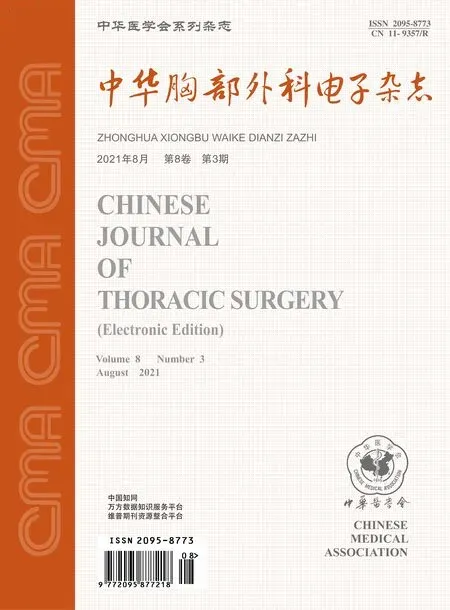Clinical and ethical considerations in lung transplantation surgery in patients with post-COVID pulmonary fibrosis
Sjaak Pouwels
Back in December 2019 a novel strain virus called, severe acute respiratory syndrome coronavirus-2 (SARS-CoV-2) or later called Corona Virus Disease 2019 (COVID-19) rapidly spread across the globe causing major health catastrophes (1-3). To date, the rate of newly diagnosed patients is still rising in certain parts of the world, whereas in other parts life is going back to normal (e.g., same as prior to the COVID-19 pandemic) This is probably due to the rise of mutated variants of SARSCoV-2 causing new challenges in multiple countries (4). According to the WHO, diagnosing COVID-19 needs to be done according to a specific set of criteria (5). Patients were diagnosed with a SARS-CoV-2 pneumonia [on either a conventional chest X-ray or a computed tomography (CT) scan] and one or more of the following symptoms were present; dyspnoea, increased respiratory insufficiency, decreased blood oxygen saturation and the need for supportive oxygen therapy (5). Regarding microbiological testing, real-time reverse transcriptasepolymerase chain reaction assay (RT-PCR) on throat samples can be used to identify a SARS-CoV-2 infection (6,7). In case of (multiple) negative tests and with a very clinical suspicion, faeces tests can be used to determine the diagnosis (6,7).
With the increasing burden on health systems worldwide, COVID-19 has a similar impact on hospital resources. Majority of the hospitals in the heavy COVID-19 areas were forced to reduce their other patient care, especially surgery. Also several large cohort studies identified risk factors for COVID-19, the clinical course of a COVID-19 infection and risk factors for morbidity and mortality (1-3,8,9). Advanced age (>60 years), obesity, diabetes, hypertension, cardiovascular disease; a history of smoking and chronic obstructive pulmonary disease (COPD) were found to be significant risk factors for a COVID-19 infection (1-3,8,9).
A special group of patients are those requiring lung transplantation due to respiratory failure die to post-COVID pulmonary fibrosis (PCPF). This is a field that understudied at the moment, but will get more than enough scientific attention in the next few years. The first results on lung transplantation for PCPF are described in several studies (10,11) and the study done by Hawkins and colleagues eloquently reviews all the current evidence on this subject. Hawkins et al. (12) describe the outcomes of a total of 21 patients that received lung transplantation (12). Of the reported patients, the majority (approximately 86%) was on extracorporeal life support (ECLS) at the time of transplantation. Of the included patients 19 underwent bilateral lung transplantation. The perioperative survival rate was 95% (12).
While interpreting these first ‘quite’ positive results several clinical and ethical considerations need to be taken into account. Besides perioperative considerations like patient selection, ECLS cannulation strategy, timing of transplantation, intra-/postoperative management, several other factors are important to consider (10-13).
(I) The current findings obviously demonstrate the short-term success of urgent lung transplantation for COVID-19 with associated respiratory failure in a selected group of patients. This probably induced reporting bias (e.g., reporting of negative findings and/or unsuccessful cases and/or complications) (13).
(II) The timing of the lung transplantation in current studies is mainly in the (sub) acute phase of COVID-19 in patients that are unweanable from ECLS. However, we do need to take into account that a lot of intensive care unit (ICU) patients could benefit from lung transplantation (6,8,13). Also survivors from a COVID-19 infection with chronic respiratory failure and clinical sequelae could be potential candidates. So, patient selection is going to be a challenge in the coming years.
(III) An increasing number of donors will have suffered from COVID-19, which may result in residual organ injury making their organs less suitable for transplantation (13,14).
(IV) The possibility of long-term viral persistence and replication potential in the lung parenchyma is another aspect that needs to be studied in the coming years. In other words, the chance of COVID-19 transmission or COVID-19 relapse in transplant patients using high levels of immunosuppressive drugs (10,11).
(V) Stringent selection criteria and prioritization should be applied, yet the possibility of combined organ transplant procedures-such as heartlung, lung-kidney, and lung-liver-thoughtfully considered in eligible candidates (15).
(VI) More than ever, societal cost-benefit and quality-adjusted life years should be considered in the decision-making process for lung transplantation (12-15). Also, equity in organ donation, allocation and access to transplantation should be safeguarded at all times during the current pandemic, particularly with ICU-capacity being overcrowded by COVID-19 (10-15).
The abovementioned points are just the ‘tip of the iceberg’. The coming years will show how lung transplant surgery will change due to COVID and associated respiratory failure.
Acknowledgments
Funding: None.
Footnote
Provenance and Peer Review: This article was commissioned by the editorial office, Chinese Journal of Thoracic Surgery for the “International Thoracic Surgery Column”. The article did not undergo external peer review.
Conflicts of Interest: The author has completed the ICMJE uniform disclosure form (available at https://dx.doi.org/10.3877/cma.j.issn.2095-8773.2021.03.03). The “International Thoracic Surgery Column” was commissioned by the editorial office without any funding or sponsorship. Dr. SP serves as an unpaid editorial board member of Chinese Journal of Thoracic Surgery from May 2021 to April 2023. The author has no other conflicts of interest to declare.Ethical Statement: The author is accountable for all aspects of the work in ensuring that questions related to the accuracy or integrity of any part of the work are appropriately investigated and resolved.
Open Access Statement: This is an Open Access article distributed in accordance with the Creative Commons Attribution-NonCommercial-NoDerivs 4.0 International License (CC BY-NC-ND 4.0), which permits the noncommercial replication and distribution of the article with the strict proviso that no changes or edits are made and the original work is properly cited (including links to both the formal publication through the relevant DOI and the license). See: https://creativecommons.org/licenses/by-ncnd/4.0/.

